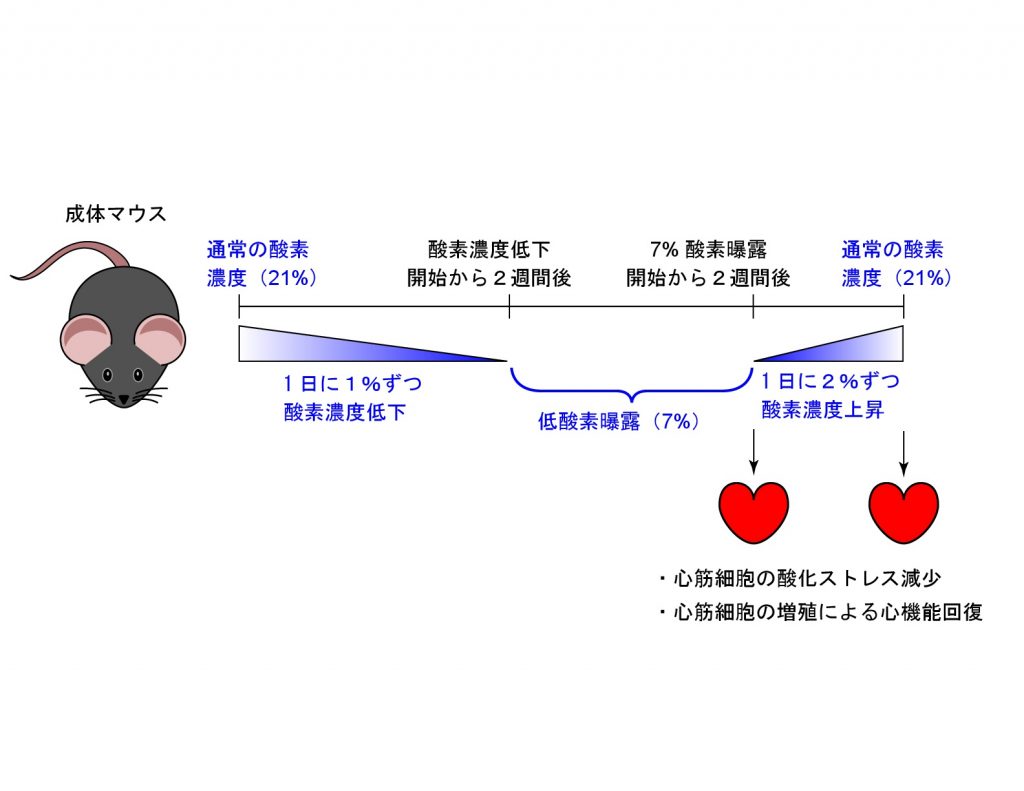生命領域学際研究センター(TARAセンター)所属の国際テニュアトラック木村航助教が派遣されているUniversity of Texas Southwestern Medical Centerのグループが低酸素状態にて心筋細胞の増殖が活性化し,損傷を受けた心臓の再生が誘導されることを発見しました。
研究の概要
この研究では,正常なマウス,または心筋梗塞を誘導したマウスを通常の21%酸素濃度から7%酸素濃度に1週間かけて徐々に酸素濃度を薄くしていき、その後2週間7%酸素濃度状態で飼育した時の心臓の状態と、2週間7%酸素濃度状態で飼育した後に1日2%ずつ酸素濃度を戻して通常酸素濃度21%へ戻した後の心臓の状態を調べました(下図)。すると、2週間7%酸素濃度で飼育した際に心筋細胞での酸化ストレスの減少と心筋細胞数の増加、さらにそれに伴う心肥大が観察されました。また心筋梗塞を誘導したマウスにおいて、心機能の向上が見られました。
この研究によって心筋細胞の増加には、低酸素濃度の状態が有効であるということが判りました。今後、心疾患によって機能が衰えた心臓に対して、心筋細胞の増殖による機能回復につながるような発展が期待されています。
論文へのリンク
Hypoxia induces heart regeneration in adult mice

A research article conducted by Dr. Kimura of International Tenure Track has been published in Nature
A research group from the University of Texas Southwestern Medical Center, where an assistant professor Dr. Kimura of International Tenure Track of TARA center is affiliated and dispatched, discovers an extreme low oxygen condition can lead to heart regeneration and the recovery of heart function.
The study demonstrated that adult mice kept in 7% oxygen, equivalent to the summit of Mt. Everest, for two week following a gradual decrease in oxygen level by 1% per day showed increased heart size due to the proliferation of cardiac muscle cells, cardiomyocytes. Moreover, adult mice with myocardial infarction (MI) treated with the same hypoxia followed by the recovery of oxygen level by 2% per day to normal (21 %) level showed an improvement of heart function and increased heart muscle mass.
These results indicate that an extremely low oxygen condition can enhance cardiomyocyte cell division and thus induce heart regeneration. This discovery sheds light on the effect of oxygen metabolism on cardiomyocytes regeneration and may lead to new therapeutic approaches for heart diseases.
